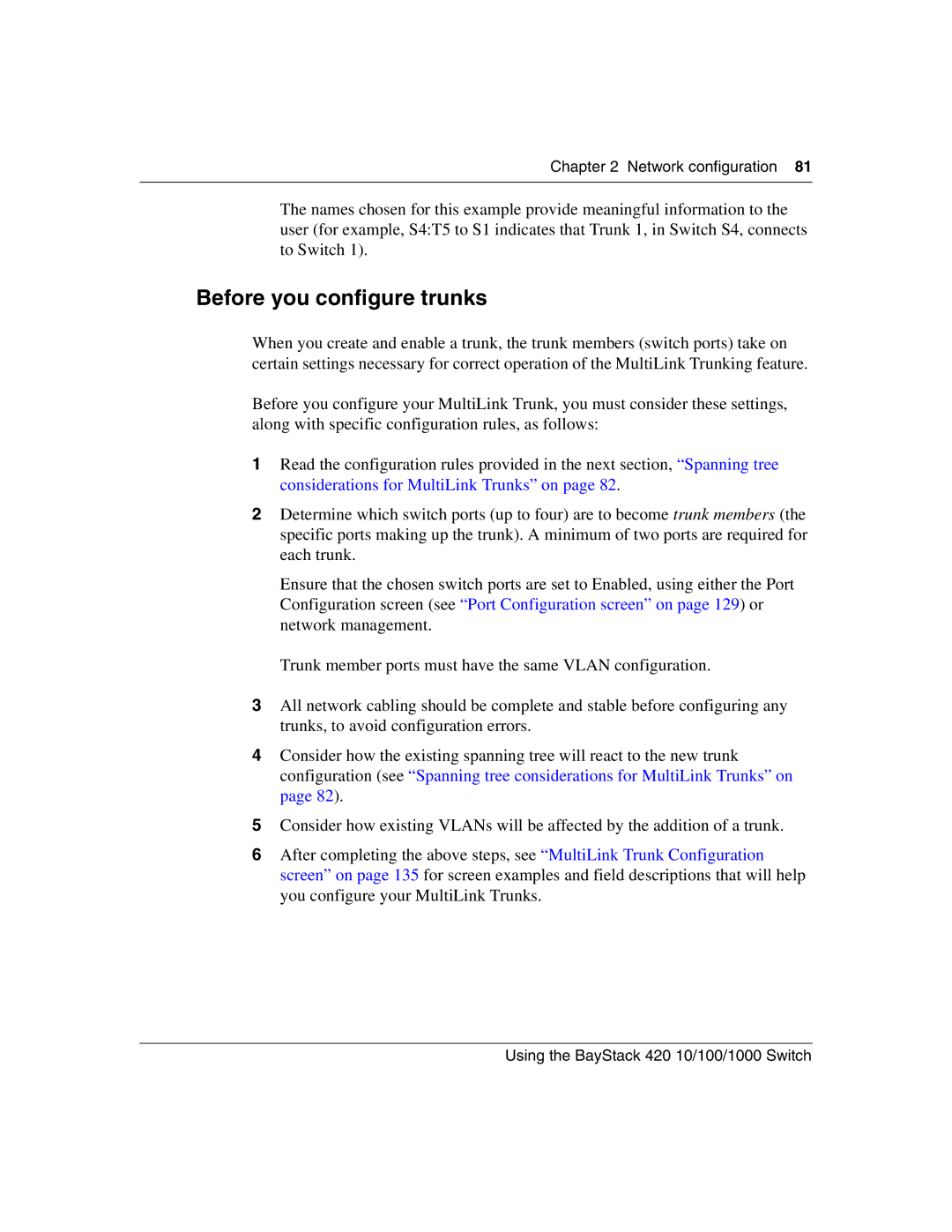
Chapter 2 Network configuration 81
The names chosen for this example provide meaningful information to the user (for example, S4:T5 to S1 indicates that Trunk 1, in Switch S4, connects to Switch 1).
Before you configure trunks
When you create and enable a trunk, the trunk members (switch ports) take on certain settings necessary for correct operation of the MultiLink Trunking feature.
Before you configure your MultiLink Trunk, you must consider these settings, along with specific configuration rules, as follows:
1Read the configuration rules provided in the next section, “Spanning tree considerations for MultiLink Trunks” on page 82.
2Determine which switch ports (up to four) are to become trunk members (the specific ports making up the trunk). A minimum of two ports are required for each trunk.
Ensure that the chosen switch ports are set to Enabled, using either the Port Configuration screen (see “Port Configuration screen” on page 129) or network management.
Trunk member ports must have the same VLAN configuration.
3All network cabling should be complete and stable before configuring any trunks, to avoid configuration errors.
4Consider how the existing spanning tree will react to the new trunk configuration (see “Spanning tree considerations for MultiLink Trunks” on page 82).
5Consider how existing VLANs will be affected by the addition of a trunk.
6After completing the above steps, see “MultiLink Trunk Configuration screen” on page 135 for screen examples and field descriptions that will help you configure your MultiLink Trunks.
